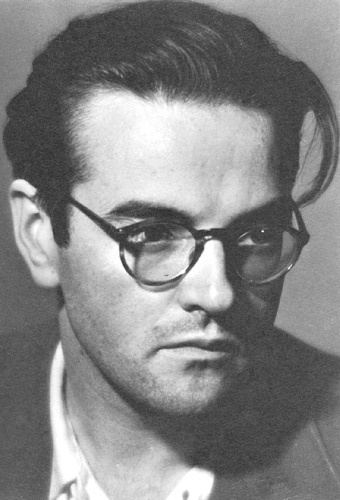Name Sergio Castro | Role Artist | |
 | ||
Occupation French-Argentinian artist Died December 31, 2012, Paris, France | ||
Sergio de Castro (15 September 1922 – 31 December 2012) was a French-Argentinian artist.
Contents

Biography

Sergio de Castro was born in Argentina, in an aristocratic family of Spanish origins (Galicia and the Basque Country), the House of Castro. His father was a diplomat, which is why, from 1923 until 1932, Castro lived in Switzerland with his parents and his two sisters. During these years he visited cities like Lausanne, Geneva and Turin.
In 1933 he entered a Jesuit school in Montevideo and he started studying music. He discovered poetry by learning to speak and write in Spanish. He was specially touched by the works of César Vallejo. Through the years Castro would become close friends with writers like Octavio Paz, Julio Cortázar, Samuel Beckett, Kostas Papaioannou and Georges Schéhadé. Later, during a trip to Uruguay, he met Joaquín Torres García, with whom he studied painting and monumental art from 1941 until 1949. In 1942 he moved to Argentina, where he would live until 1949. Castro was also friends with other artists like Nikos Hadjikyriakos-Ghikas, Maria Helena Vieira da Silva and Árpád Szenes.
In 1945 he found a job as a secretary in the Astronomy Observatorium of the city of Córdoba, where we also worked as the assistant to the musician Manuel de Falla in Alta Gracia, until his death in 1946. In 1945 and 1946 he had a grant from the French government to study musical composition. During the year of 1946 he had an exhibition in New York City among other members of Torres García's workshop. That same year he traveled to the northeast of Argentina and the south of Perú to study pre-columbian art with Gonzalo Fonseca, Julio Uruguay Alpuy and Jonio Montiel.
In 1949 he started teaching History of Music in the new music school of the city of La Plata. His work as a musician drew attention from relevant figures such as Wilhelm Furtwängler, Aaron Copland and Juan José Castro. He quit this job when he got a grant from the French government to improve his musical studies in Paris, where he settled in November 1949. Since 1951 he devoted himself exclusively to painting.
In 1955, his friend the German writer and translator Edith Aron introduced him to Julio Cortázar, who would become a close friend of him. Castro inspired the character of Etienne in Cortázar's novel Rayuela (Hopscotch). In the book is featured the intimate friendship of the protagonist, Horacio Oliveira, with his companion in the Serpent Club, whom he often visited in his studio in Paris. In 1960 he won the Hallmark Prize in New York. In 1979 he obtained the French nationality.
In 1980 he showed his works at the Argentinian pavilion in the 39th Venice Biennale. He was associate professor in the Human Sciences Faculty of the University of Strasbourg from 1981 until 1986. In 1997 he became Officer in the Ordre des Arts et des Lettres.
In 2006, Sergio de Castro made a 220-work donation to the Fine Arts Museum of Saint-Lô.
He was also a close friend of the musician Alberto Ginastera, who made reference to Sergio de Castro and his first works in his notes on modern Argentinian music.
Castro died 31 December 2012 in Paris. He is buried in the Montparnasse cemetery, in Paris, close to his dear friend Samuel Beckett.
